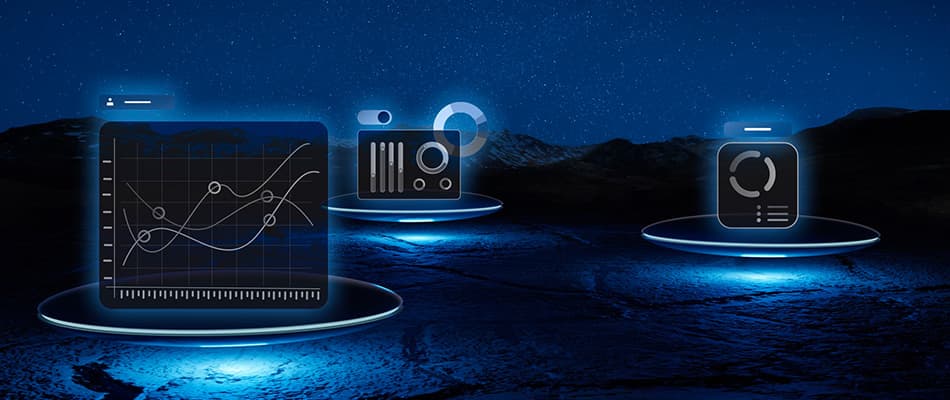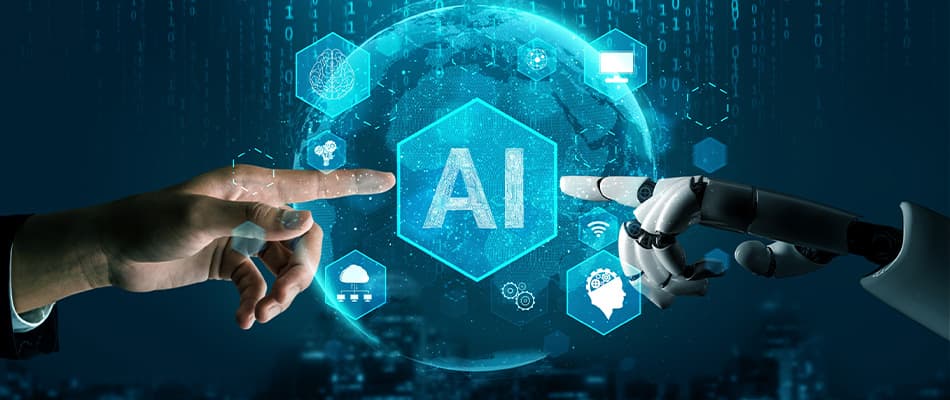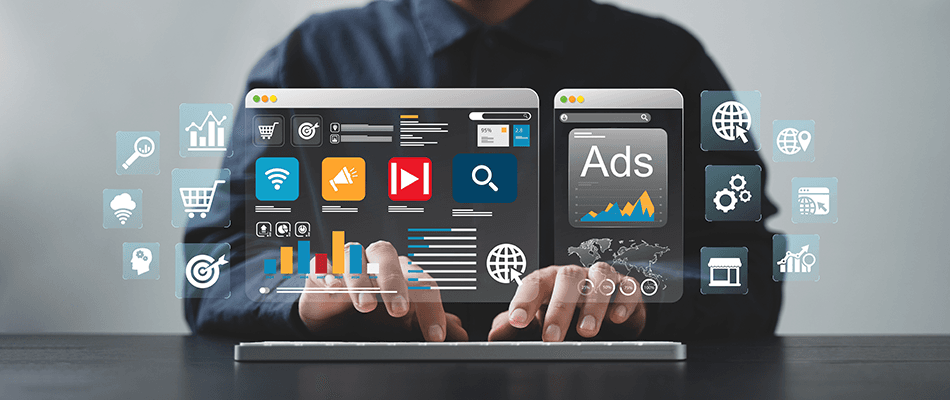How to Learn Big Data? Know the Steps, Challenges, & Tips for Learning Big Data!
Big data refers to large and complex datasets that are difficult to process and analyse using traditional methods. In a world where data usage is rapidly increasing, understanding and analysing big data has become crucial. Since there is a growing need for professionals who can handle big data, many people are now looking to learn this field.
While many individuals have enroled in different certification courses, many are still wondering how to learn big data in a short period of time. However, anyone can understand the core concepts and tools of big data with the right resources and approach. From learning data processing techniques to exploring machine learning, the process is both challenging and rewarding.
Read the article to understand how to learn big data, its challenges, its future and more.
What is Big Data?
Big data refers to large and complex datasets that offer valuable insights and opportunities, which only advanced data-processing technologies can analyse and manage. These data sets often have many entries (rows) and attributes (columns), making them powerful for analysis but also challenging to manage.
Big data analysis involves various challenges, such as data capture, storage, analysis, and privacy concerns. It is often defined by three important characteristics: volume, variety, and velocity. A fourth concept, veracity, relates to the quality of the data. Big data is used for predictive analytics and to find insights that can drive decisions in areas like healthcare, business, and science.
Know how does AI differ from traditional computer programmes here
Why Should You Learn Big Data?
The growing importance of data in decision-making and innovation makes learning big data a valuable skill. With more companies and industries leveraging the power of data, understanding and analysing large, complex datasets have become essential. Once you know how to learn big data, you can tackle real-world challenges and contribute to advancements in different sectors like finance, IT, etc. Learn more about why you should learn big data below:
1. Better Career Opportunities
With the exponential growth of data, the demand for roles like data scientists, data engineers, and data analysts is rapidly increasing. As data continues to grow, these professionals will be crucial to businesses, offering great career prospects.
2. Business Value
Companies use Big Data to improve decision-making and customer experiences. This helps businesses stay competitive and drive growth through data-driven insights.
3. Used in Every Sector
Big Data professionals can work across various sectors, including finance, healthcare, retail, and technology. Every industry uses Big Data to gain a competitive advantage and make informed decisions.
4. Innovation and Creativity
Big Data enables professionals to explore new ideas and innovative solutions. It encourages creative thinking to solve complex problems, creating new opportunities for innovation in various industries. For example, in healthcare, Big Data is used to analyse patient data and predict disease outbreaks, leading to more precise treatments and proactive care solutions.
5. Personal Growth
Learning Big Data helps develop strong analytical and technical skills. It also upskills problem-solving abilities, enabling one to tackle complex challenges across various industries.
6. Global Impact
Big Data has the potential to solve global challenges in areas like healthcare, climate change, and urban planning. Professionals in this field can contribute to large-scale, meaningful changes that affect communities worldwide.
Know why do we need artificial intelligence here
Steps to Learn Big Data
Learning Big Data can seem overwhelming at first, especially with the wide range of tools, languages, and concepts involved. However, you can gradually build the expertise you need by dividing the process into clear steps. If you are wondering how to learn Big Data, you can start with the fundamentals and then move on to hands-on experience. Below are the steps to guide you on your learning journey:
1. Understand the Basics
Learn what big data and machine learning are and how they differ from traditional data analysis. Understanding the basics will help you build a solid foundation for further learning.
2. Learn Data Processing Tools
Once you understand the basics, the next step is to learn essential big data tools. This knowledge will enable you to analyse and extract insights from data.
3. Learn Programming Languages
Programming skills are essential for automating tasks and building solutions in big data. With the right languages, you can develop robust, scalable systems that can analyse complex datasets, which is highly valuable in any data-driven role.
4. Understand Databases and Storage
Familiarity with storing and retrieving data allows you to organise and manage vast amounts of information. This is crucial for ensuring that data is accessible and usable when needed, which is vital for any data-driven decision-making.
5. Learn Data Analysis and Visualisation
Data analysis and visualisation skills are crucial for interpreting and presenting insights. You can turn complex datasets into clear, actionable insights by learning statistical analysis and tools like Tableau or Power BI.
6. Enrol in a Course
If you are wondering how to learn big data, you can enrol in a course to build the foundation. A good course will offer practical examples, mentorship, and the chance to learn from experienced instructors, helping you gain a deeper understanding of big data concepts and tools.
7. Get Hands-On Experience
Practical experience allows you to apply what you have learned in real-world scenarios. Working on projects and solving real problems will deepen your understanding, build confidence, and help you develop a portfolio that showcases your skills to potential employers.
Challenges in Learning Big Data
Learning big data can be a fulfilling experience, but it comes with its own set of challenges. When exploring how to learn big data, many face difficulties related to understanding complex tools, managing large datasets, and grasping the wide range of concepts involved. These obstacles can be overwhelming, but overcoming them leads to valuable expertise. Learn about these challenges below:
- Managing large datasets can be overwhelming and requires both technical skills and patience.
- Understanding the wide range of concepts in big data, such as storage and analytics, can be complex.
- The initial complexity of programming languages and data processing techniques can be challenging for beginners.
- Ensuring the quality and accuracy of data is challenging due to incomplete or noisy information.
- The rapidly evolving field of big data requires continuous learning to keep up with new tools and techniques.
- Integrating big data solutions with existing systems or infrastructure can be a complex and time-consuming process.
Know what is adversarial search in artificial intelligence here
Tips to Learn Big Data
Understanding big data requires a well-structured approach, especially given its complexity and vastness. For those wondering how to learn big data successfully, it is essential to stay focused on building foundational knowledge first, then gradually dive deeper into specialised topics. These tips will guide you through the learning process, helping you overcome challenges along the way. Given below are the tips for learning big data:
- Divide your learning into specific areas, like data storage, processing, analysis, and visualisation, to become a well-rounded expert.
- Focus on learning how to clean and preprocess data, as this is a crucial step in Big Data projects.
- Work on developing problem-solving skills, as big data often involves addressing complex challenges and finding innovative solutions.
- Learn about data ethics and privacy concerns, as understanding the responsible use of big data is essential in the data-driven sector.
- Explore cloud-based big data platforms, which are increasingly important for managing and processing large datasets at scale.
- Try to apply big data solutions to areas of personal interest, such as sports analytics or social media trends, to keep your motivation high.
The Future of Big Data
Once you know how to learn big data, you can develop advanced skills that are crucial for the future. With the ongoing advancement of technology, the demand for data-driven insights will keep growing, creating new opportunities across industries. With the right expertise, you can be at the leading edge of developments that influence the future of various fields. Let us learn about the future of big data below:
- AI Integration: Combining big data with AI for predictive analytics to identify trends and make data-driven predictions.
- IoT Data Processing: Managing data from millions of interconnected devices to optimise operations and improve efficiency.
- Personalisation: Leveraging big data to deliver hyper-personalised experiences in marketing and e-commerce by analysing consumer behaviour.
- Data Governance: Strengthening data governance practices to ensure data privacy, compliance, and quality.
- Blockchain Integration: Integrating big data with blockchain technology to enhance security and transparency in transactions.
- Smart Cities: Using big data for urban planning, optimising traffic management, and improving public services in smart cities.
Know how to get an artificial intelligence job here
Why Choose Digital Regenesys To Learn Artificial Intelligence?
If you are wondering how to learn big data in a short period, you can enrol in Digital Regenesys’s Artificial Intelligence Course. The curriculum is designed to give you a deep understanding of AI concepts and tools, preparing you to tackle real-world challenges. With experienced instructors and hands-on projects, this course can help maximise your potential in the AI field. Let us know some more reasons to choose this course below:
- Gain practical AI skills that are in high demand.
- Learn from industry experts with years of experience.
- Get hands-on experience with AI tools and software.
- Improve your career prospects with advanced AI knowledge.
- Get access to live classes and real-time support.
- Develop problem-solving and analytical skills.
- Explore AI concepts like Machine Learning and Neural Networks.
- Receive a globally recognised certification.
- Build your professional profile and stand out in the job market.
In conclusion, once you understand how to learn big data, you can build your foundation in managing large datasets. The knowledge gained can build your professional profile and improve your problem-solving abilities. Digital Regenesys provides an in-depth AI course that equips you with practical skills, expert guidance, and a globally recognised certification. Whether you are new to AI or looking to upskill, this course will give you the tools to succeed. Enrol in the course today and take the first step towards learning big data and AI!
How to Learn Big Data? – FAQs
What is big data?
Big data refers to large, complex datasets that traditional data-processing software cannot handle, often defined by volume, variety, and velocity.
What programming languages should I learn for big data?
Learning languages like Python, R, and Java is essential for data processing, analysis, and building scalable big data systems.
How to learn big data?
To learn big data, begin with the basics, then build skills in tools, programming, and analysis, and gain hands-on experience.
What is big data in marketing?
Big data in marketing refers to the use of large and complex data sets to analyse consumer behaviour, optimise marketing strategies, and personalise customer experiences.
How can I gain hands-on experience with big data?
To gain hands-on experience with big data, you can contribute to open-source projects, participate in data competitions, and work on real-world problems to apply what you have learned.
What are big data and machine learning?
Big Data refers to large and complex datasets that require advanced tools and technologies to process and analyse. At the same time, machine learning is a type of artificial intelligence that enables computers to learn from data and improve their performance without being explicitly programmed.













